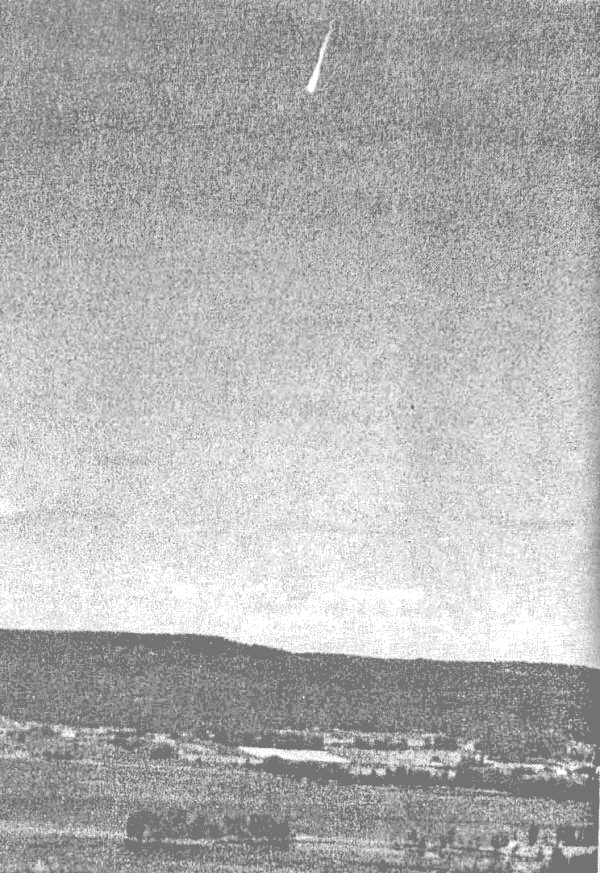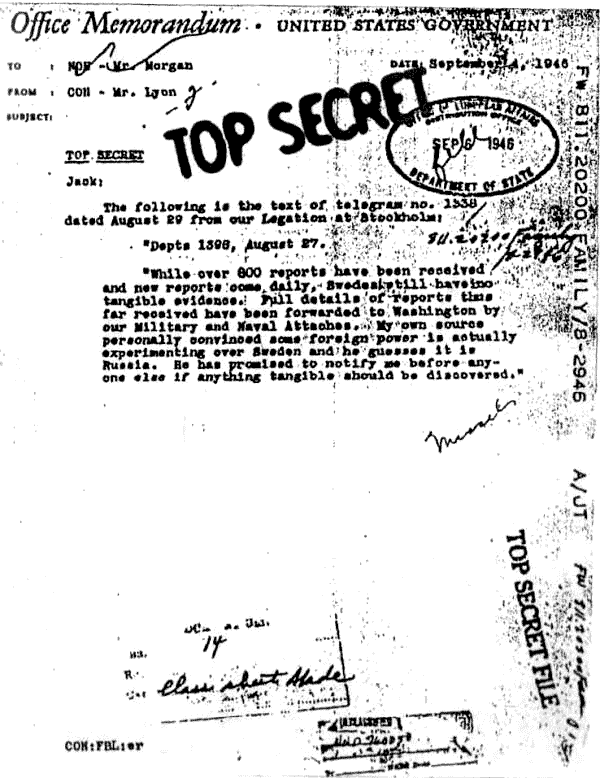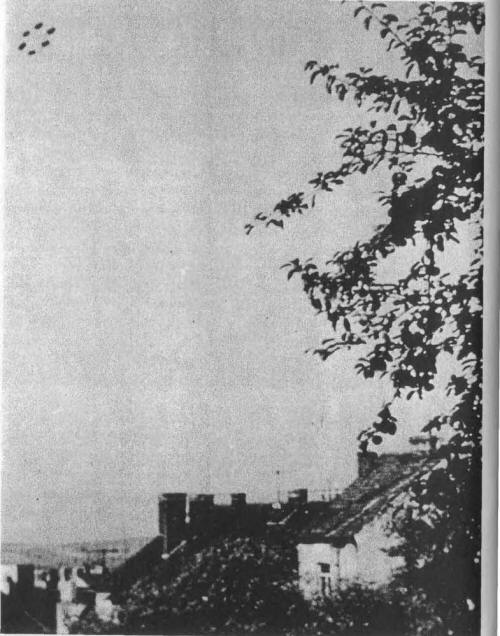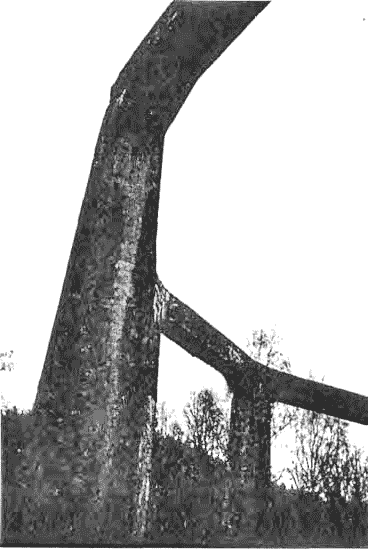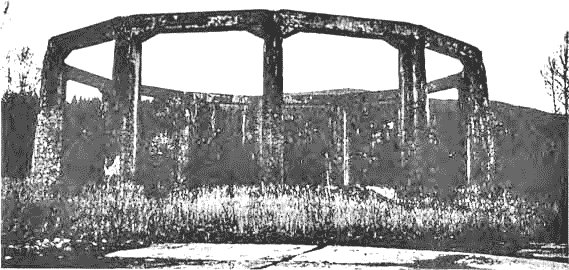|
CHAPTER TWO: RELIABLE SOURCESMuch has recently been written concerning German flying discs. To the best of my knowledge, no single source has all theanswers. To piece this puzzle together information from varioussources must be used. Of course, some sources are better than others. Categories of sources, in a somewhat descending order of reliability are:
Sources without names are not as good as sources with names. Information, data, or pictures without a "chain of evidence" linking them to the event are not as good as those with proper documentation. After almost sixty years, nothing is going to be perfect. These categories are not meant to be absolute. Some sources fit into multiple categories. Some reports have value even though they are not rigorous simply because they were later corroborated by other sources. When reading allegedly factual statements, the reader should always be looking for the source documentation for these statements. A writer's opinion or interpretation may be valuable but it should always be made clear which is who. Examples of the first category are those who worked on German saucer projects: Among these is Rudolf Schriever. Schriever was involved in a German saucers project which sometimes bears his name. As a source of information, he wrote an article on German saucers for the very respected Der Spiegel magazine (1). Likewise, Joseph Andreas Epp was a self-admitted consultant for both the Schriever-Habermohl project at Prag and the Mietheproject in Dresden and Breslau. Mr. Epp wrote to me personally (2) and has written several articles and a book about German saucers before he died in 1997 (3). An example of a witness who had prior knowledge of German saucers would be Georg Klein. Klein was an engineer, an eyewitness to a saucer lift-off on February 14, 1945. He was also Special Commissioner in the Ministry of Arms Production who oversaw both the Schriever-Habermohl and Miethe-Belluzzo projects for Albert Speer. Mr. Klein has written some newspaper articles about these facts such as his article in Welt am Stonntag, titled "Erste"Flugscheibe" flog 1945 in Prag" (The First Flying Disc flew in Prague in 1945)(4) . Other newspaper references of Mr. Klein will be mentioned. He has also written under the pen-name of Georg Sautier. Another example would be the unnamed eyewitness provided by researcher Horst Schuppmann and first reported in Karl-Heinz Zunneck's book Geheimtechnoloaien. Wunderwaffen Und Irdischen Facetten Des UFO-Phaenomens (Secret Technology, Wonder-weapons and the Terrestrial Facts of the UFO Phenomenon). In this report the informant relates a wartime experience in which he witnessed several small flying saucers in a hangar (5). George Lusar is an example of a source falling under category three. Lusar worked for the German Patent Office during World War Two. He saw many secret patents as they came into his office. After the War he wrote a book and some articles concerning this technology which was taken by the Allies (6). Likewise, Italian engineer Renato Vesco worked with Germans while at a secret division of Fiat housed in an underground facility on Lake Garda, right in the middle of the proposed Alpenfestung.After the war, Vesco also researched British Intelligence data.This data was voluminous. Of course, Vesco knew what to look for based upon what he had learned while working in a secret Axis underground facility. Vesco is an example of category three and the next one, category four. Category four involves intelligence information obtained from governmental sources. This information mostly comes from the very entities who are trying to suppress this information. It should always be suspect. It should be used only to verify information obtained from higher sources (categories 1 through 3)or from governmental sources of another government. For instance, information concerning flying objects which Renato Vesco called "Fireballs" was verified using information obtained from the U.S. government under laws forcing it to divulge some types of information (Freedom Of Information Act) (7). Category five would include, for instance, Callum Coats whom spent three years with mathematician and physicist, Walter Schauberger, son of Viktor Schauberger. Mr. Coats consequently learned a great deal of information concerning the ideas ofViktor Schauberger. Mr. Coats is a scientist and architect.Coats wrote Living Energies about the ideas of Schauberger and his saucer models (8). In the same category we find Michael X. Barton, who, through a translator, Carl F. Mayer, received information from an informant in German, Hermann Klaas, who claimed to have actually been involved with some of the German saucer projects. Klaas' peripheral knowledge (category three) also seems to have extended into other aspects of secret German research and technology.Barton wrote one of the earliest books on this topic, The German Saucer Story in 1968 (9). One unique source is Wilhelm Landig. Landig wrote three novels dealing with the Second World War. Following the title of each novel, Landig tells the reader that this is a "novel based on realities". The reader is given to understand that the technology described was based on hard fact. Landig's works contain more than cold facts, however. Landig deals with a large variety of topics in his books. Sometimes facts or opinions are stated or "stories behind the story" are told. He writes, unashamedly, from the National Socialist perspective. Landig was obviously a Nazi and an intellectual insider. His history always remained unclear, at least to this writer, until his recent death. Because of his unclear background and the fact that he wrote in novel form, there has been a reluctance to ascribe full creditability to the statements he makes regarding the technology of the Third Reich. This all changed in 1999 as a result of research done by Margret Chatwin with an organization called "Informations diesnst gegen Rechtsextremismus" (Information service against the extreme right) (10). Coming in from this perspective, they, certainly, would not be accused of aggrandizing Landig's career. Some details of Landig's biography are now filled in. In that article we learn that Landig, an Austrian, took part in the unsuccessful Vienna Putsch of 1934. Thereafter, he fled to Germany and was inducted into the SD, the SS and the Waffen SS. There he rose to the rank of "Oberschafuehrer". Eventually, Landig was detailed to oversee government security concerns and given a position in the Reichs Security Department. Landig, in this position, was assigned to cover the security for the development of "UFOs"(11). It turns out that Landig was not only a source but a great source concerning the development of German saucers. CHAPTER TWO
The above photo, showing six saucers in formation, was given to Dr. J. Allen Hynek in the early 1950s by the director of the Ondrejov Observatory in Czechoslovakia. No details of the sighting are available, but the photo is thought to have been taken near Prague, perhaps during WWII.
Above: Drawings of the Project Saucer craft designed in 1941 by Rudolf Schriever, a Luftwaffe aeronautical engineer, and his three colleagues, Habermohl, Miethe and Bellonzo. The first prototype was flown in June 1942 and larger versions were apparently designed and manufactured at the BMW factory near Prague, Czech Republic.
Above: The circular "Mucholapka" building in Poland. According to Polish Military Historian Igor Witkowski it was used for testing saucer-type craft. Index |
